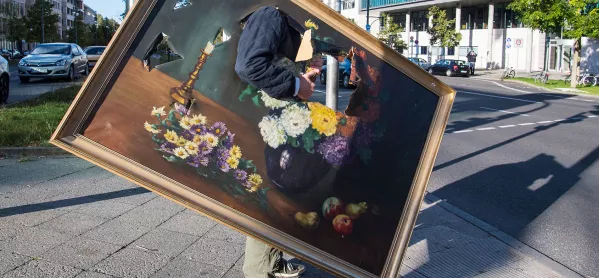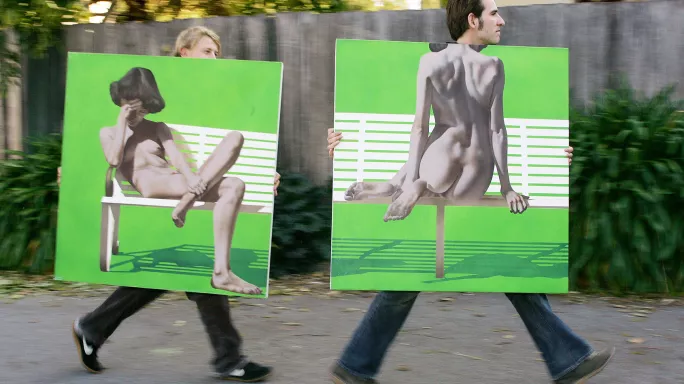I stand in front of the class, forehead creased in concentration, mouth open, looking for words that just aren’t there. I’m trying to describe stooks.
It’s a simple word. One that appears in the poem Storm on the Island by Seamus Heaney. I try again.
“It’s when they get hay and they…” I gesture with my hand. Then I give up and pull up a Heywood Hardy painting from Google Images instead.
Quick read: Why every teacher should be using dual coding
Quick listen: How much of your lesson should be teacher talk?
Want to know more? Why keeping it simple is the key to multimedia learning
Despite being an English teacher and a lover of words, there are times when they fail me. There are some things that, even with planning and forethought, I cannot express. And so I rely on visual aids instead.
This presents a great opportunity to expose my students to interesting and beautiful pieces of art, and give them a bit of extra cultural capital in the process.
Here are three ways you can use visuals in your modelling and explanations in the classroom:
Droning on
Drones aren’t just expensive toys for techies - they’re also fantastic for capturing beautiful scenery and bringing different worlds into your classroom (all the more important when you consider that 25 per cent of your students will never physically travel outside of the UK).
YouTube is a treasure trove of drone footage. It can be used to show the valleys and mountains of the Lake District that Wordsworth reflected on in The Prelude. It can show the layout of Venice, demonstrating just how humiliating it was for Shylock to be berated in the Rialto because the city had so few other public spaces.
Fashion focus
The change of ages is a common inspiration for writers, and much of the literature we study straddles two eras, looking forward to the new while reflecting on the past. Videos and image galleries tracing trends are perfect for demonstrating changing times.
For students studying The Great Gatsby, it’s easier to understand why jazz and flapper fashion were so shocking when you hear the music that came before, alongside the traditional clothing of the late 1800s.
Likewise, when looking at the stylish Birling family in An Inspector Calls, there’s a lot of value in comparing the fashions of 1946 (when the play was first performed in London), with those of 1912 (when it was set), to demonstrate how much society had moved on and been changed by two World Wars.
Tricky terms
“Stooks”, “curtain pelmet”, “sabres”…trying to describe these objects can leave you floundering. Students won’t always share the same reference points as us (what 14-year-old pays enough attention to interior design to understand what a pelmet is?), so using images to demonstrate vocabulary makes sense.
And using interesting photography or paintings makes it much more interesting. Try James Tissot for a painting with a curtain pelmet, for example, and Kandinsky for Russian sabres.
Grainne Hallahan taught English in Essex for 10 years. She is part of the #TeamEnglish Twitter group





